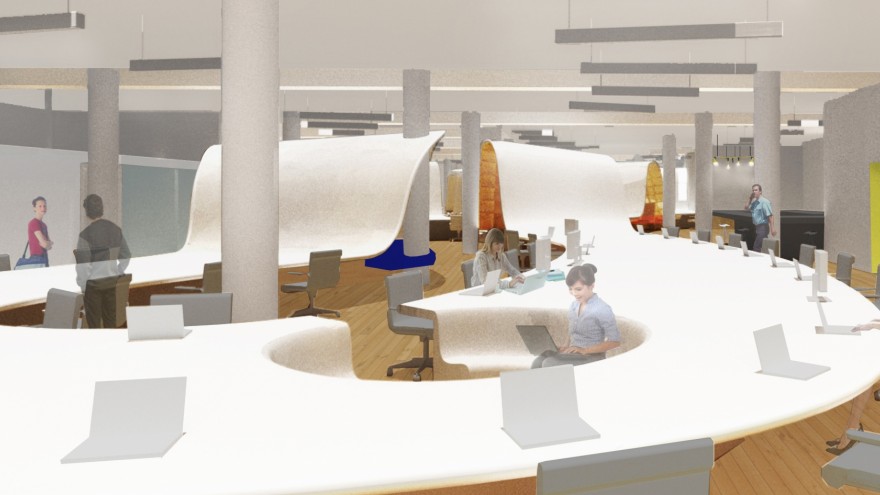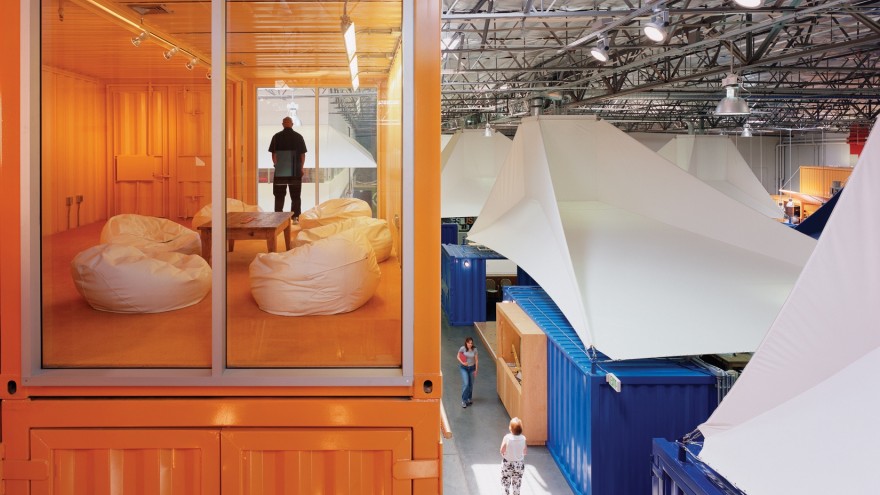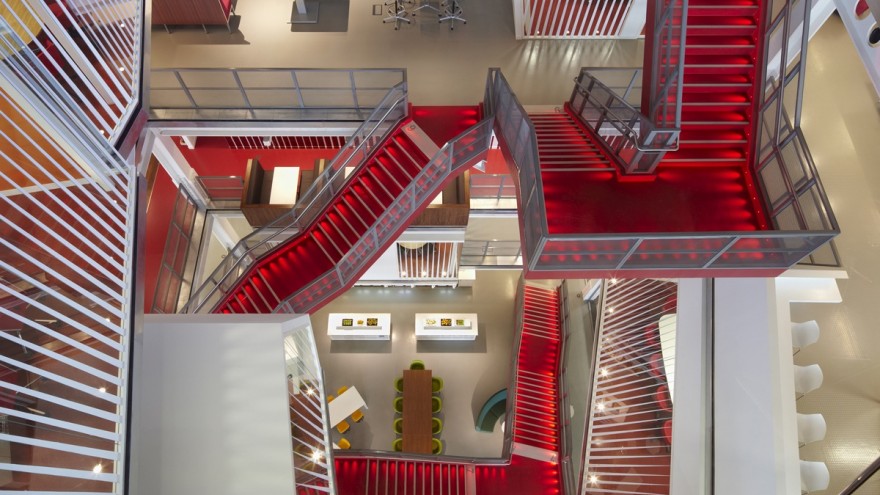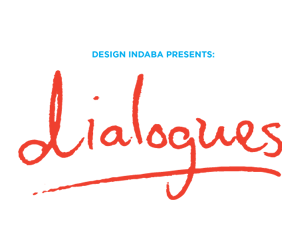Part of the Project
Design Indaba: You often refer to the concept of the "social agenda of buildings". What do you mean by "social agenda" in the context of the built environment?
Clive: Buildings perform various roles for accommodating human needs. We consider that places of work are in a critical performance category in that their ability to support and enhance human interaction and social connectivity is a critical function. In the history of design there has been a rich speculation on the image characteristics and amenity offerings of dwellings, but until recently, an incredible absence of serious thought around the buildings that we inhabit for most of our waking lives: what are commonly called "offices".
The doctor’s prescription for how a building is configured or organized is called a "program" in America, and a "client brief" in the UK and South Africa. These terms refer to a listing of basic functions that need to be accommodated in buildings, often with little or no acknowledgment that their primary purpose today is to facilitate knowledge sharing and social interaction.
Today, a building has become more than ever a theatre for staging the drama of productive human life.
Building performance is no longer based on basic air conditioning or glazing thermal performance. Technical issues are taking a backseat. In 2014, if the office cannot support innovation and ideation, it can fatally damage a business’s success in the marketplace.
The social agenda is therefore tied to effective knowledge sharing, business productivity and the life or death of companies.
You're acknowledged as a global leader in workplace design. What prompted your specialisation in, and approach, to office design?
From our first forays into the office market, we were concerned that any architectural expression needed to be grounded in a performance driven engineering of the organisational model. Office design had evolved from Taylorist concepts of efficiency that equated human beings with machines, and created a normative model that straightjacketed corporations and severely deformed personal growth and development in the workplace. The white-collar service economy has fortunately moved on, since computers have taken over routine work, and performance today is vulnerable to constant change and evolution.
Our eyes were opened in the 1990s by working with ad agencies who were very focussed on their workspaces. There is a common thought that these agencies have a frivolous culture, but considering that they literally live or die by an intensive production of fresh ideas, it is more useful to see them as a model of the new successful business, which equally needs a powerful ideation culture to drive performance and success.
In 1997, we designed the “advertising city” project for the West Coast’s largest ad agency, TBWA/Chiat/Day, in Los Angeles. This project proposed a kind of highly connected and transparent village in a large warehouse for 450 employees with zero enclosed offices. sixteen years later the agency still uses the same architecture, while it has expanded to over 900 people. The connected village concept has proved highly sustainable and cost effective.
While we were criticised at the time that this "fantasy" environment would date and be rapidly obsolete, the opposite has proved true. The architecture of the building is in fact rigorously related to cost-effective methods of construction to accommodate specific functions. The only thing that was new, was the social agenda that was determined with the client: to produce scripted spaces that would foster collaboration and provide opportunities for new ways of working. In that sense, the building represents a set of "built ideas" and therefore appears unusual.
Since that project, we have been charged with numerous transformational projects for companies who understand how buildings can shape people, and communities.
We realised our mission was to build creative communities.
To prove that all businesses had this capacity for creativity (since it is an ability to conceive radically), we went to Australia to land the Macquarie Bank project of One Shelley Street in 2006. We were fortunate enough to go through a three-year journey of transformation with a very conservative client who went from old-fashioned offices to a completely mobile form of working for 3 000 employees. The resulting project, One Shelley Street has been one of the most influential office projects in the world, primarily for its emphasis on supporting the wide range of social activities that an office must support, but also for a radical sustainability and technological agenda that future-proofed the building and its user organisation.
Do you believe that the built environment of a workplace can change or shape an organisational culture?
What we have learnt over the years is really very simple. Ideas shape our buildings. The absence of ideas also shapes our buildings. And weak ideas make weak buildings. Winston Churchill said, “We shape our buildings and thereafter, they shape us”, and this is fundamentally true. For instance, it is commonly known today that a primary contributor to ideation is the ability to "play" precisely because "play" resembles the beta-testing regime of trial-and-error mockups or simulations.
If an office does not incorporate play in some form, it communicates that there is "no place for play" or in other words, no place for testing ideas. And when it is communicated in this way, I think we can all see that the ‘serious’ office is a dangerous place for any business.
You’re South African born yet you've never presented your work on SA soil. Do you consider this a homecoming?
I was born and grew up in Cape Town and studied initially at UCT. I left SA in 1976 primarily because of a deep rejection of apartheid, as did almost all my friends. It’s a profound sense of "reconnection" to present my work in South Africa, when last I presented as a third-year architecture student more than 30 years ago, so this is indeed a "homecoming".










